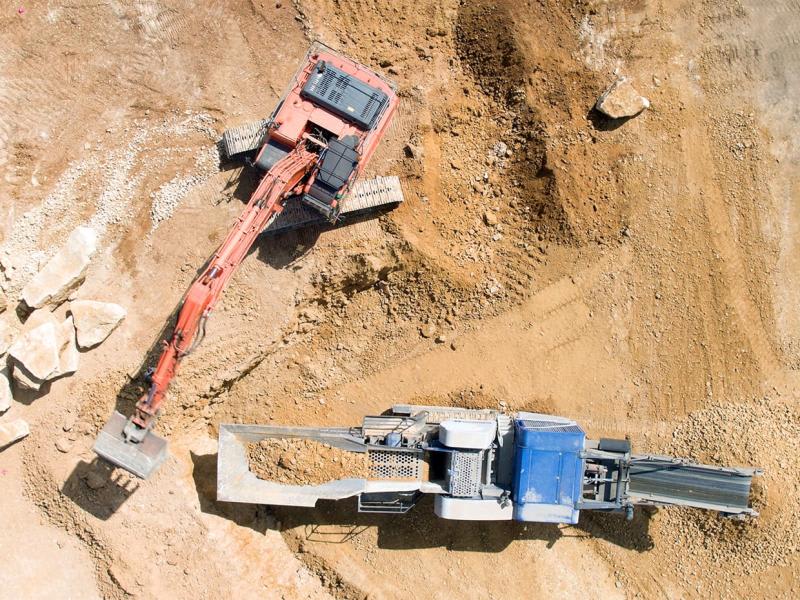AUTHORS

As Australia moves forward on its journey to substantially reduce emissions by 2030 and achieve Net Zero by 2050, thought leaders in a variety of fields are asking: do we realistically have what it takes to do this?
The simple answer is yes, but it will take considerable time and money to get there!
In addition to major infrastructure and industry innovation, critical minerals will play a central role in realising a low carbon future because renewable energy sources – such as solar, wind and electric vehicles – cannot function without them. Examples of critical minerals found in Australia which are essential to the clean energy transition include:
- Lithium – a key component in batteries used to harness solar power
- Zinc – used as a coating to protect wind turbines against corrosion
- Silicon – used in semiconductors that enable solar panels to convert light into electricity
- Vanadium – used in batteries to support grid-scale energy storage
These critical minerals, and many others, are essential to renewable energy technologies and therefore key to achieving Net Zero. Given the plentiful supply of key critical minerals in Australia, our country is uniquely positioned to participate in the clean energy transition and capitalise on growing global demand for these resources.
To ensure we capture this time-critical opportunity, both government and industry are understandably seeking to support development of the technologies, workforce and supply chains required to undertake value-add critical minerals processing and manufacture on shore.
Government planning for critical minerals
The Department of Industry, Science and Resources recently released the Critical Minerals Strategy 2023-2030 which details how Australia will look to cultivate and leverage its rich stores of critical minerals to support the energy transition locally and internationally. $500 million has been allocated to support this strategy through the Northern Australia Infrastructure Facility, as well as the Federal government’s recent Budget allocation of $57.1 million to support development of strategic partnerships through the Critical Minerals International Partnerships program.
State governments have also released their own strategies highlighting the unique opportunities and challenges to critical mineral exploration, extraction and processing in their respective regions.
In particular, Queensland recently released its Queensland Critical Minerals Strategy and Queensland New Industry Development Strategy, both of which highlight the growth of its critical minerals processing and manufacturing industries as a key priority. The Queensland government’s latest budget has pledged $250 million towards the development of its critical minerals industry, including $100 million in grants and investments through a new Queensland Critical Minerals and Battery Technology Fund.
Critical minerals is a priority focus area for funding under major Federal grant programs available to industry, including:
- ARENA’s Advancing Renewables Program, which supports projects that enable a transition to low emissions metals
- Cooperative Research Centres Projects (CRC-P grants)
- Industry Growth Program
Critical mineral impacts and opportunities for industry
There are currently 26 critical minerals on Australia’s critical mineral list, and our country possesses moderate to high geological potential for all of them. Our naturally high stores of minerals like lithium will not only be in demand locally, but internationally as well. This represents significant opportunities in terms of exports; however we must acknowledge the risks it could present for industry too.
The fight to secure large volumes of critical minerals represents exciting opportunities for businesses that are well-placed to deliver them. Be it existing mineral miners, or mining companies that are able to pivot operations to focus on critical minerals, the surge in demand could certainly prove lucrative in coming years.
But what if your business depends on the supply of a critical mineral for the production of existing goods and services? How will you manage potential shortages and skyrocketing costs as demand increases? This isn’t only true for minerals that appear on Australia’s critical mineral list, but others (like copper) which are listed as critical in other countries’ lists.
Sourcing it internationally at cheaper prices is easier said than done when we factor in social responsibility. For example, Congo is one of the largest producers of cobalt, but there are also significant human rights concerns associated with its mining. In a world where emerging ESG (environmental, social and governance) requirements will demand examination of social impact as part of sustainability reporting, it’s difficult to see how these conflicting issues could be resolved.
On the flip side, a business that attempts to secure a piece of the pie by investing heavily in critical mineral mining could be left high and dry if that mineral is removed from the list. Surprisingly, this situation is not far-fetched, given the persistent quest of innovators who are actively seeking alternative approaches to bypass conventional manufacturing techniques in the realm of renewable energies.
Lastly, what will be the cost of carbon emissions for companies that ramp up production of critical mineral mining? Will they need to wear this cost as carbon emission limits are imposed, or will they receive some sort of compensation?
These are all important questions and considerations for manufacturing, mining and energy companies as they embark on planning activities across the next 12 months.
Yes, government grants are plentiful and will be a valuable source of funding for those who find themselves in the right place at the right time to support the clean energy transition – critical minerals included. However, there are many uncertainties and risks which must be balanced with the exciting opportunities emerging in this space.
Planning for critical mineral demand
How we navigate this over the next few years will be interesting to see, as will the impressive undertaking that is required to support it across the full supply chain. Whether your business is set to profit from or be impacted by the focus on critical minerals, effective strategies will be crucial to success. If you need support, our energy and resources specialists have a deep understanding of renewable energies and ESG, backed by strong business advisory and accounting expertise. We can assist you to evaluate short and long term risks and opportunities – using scenario planning and forecasting to develop practical strategies that place you in a confident position moving forward. Change is constant and the future is promising, once you determine the optimal way for your business to operate in this new paradigm.
FOR MORE INFORMATION
To learn more, please contact our specialist Energy and Resources Risk Advisory team on (07) 3225 7819. To learn how our Government Grants team can assist you in applying for grant funding to support your critical minerals project, please contact Dr Rebecca Barnes on (08) 8214 7944.





